People.ai Alternatives
An in-depth comparison of 10 People.ai alternatives. Find the right revenue intelligence platform for your business.
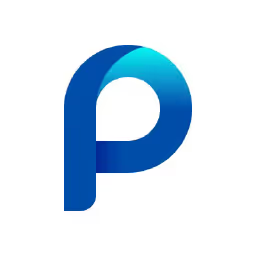
You might be using People.ai for good reasons. It’s a solid AI platform for revenue teams, excelling at automating sales tasks and providing activity insights. It helps teams manage opportunities and forecast accurately, which is why it's a popular choice.
However, some users report limitations like a lack of customization or incomplete data capture. This might be why you're looking for alternatives. We've analyzed the top options based on G2 reviews to help you choose. Let's get started.
Consider 11x for Digital Sales Workers
If you are exploring digital workers for your sales efforts, 11x is a platform to consider. It provides AI agents that focus on automating sales development functions for your team.
11x is a GTM platform that uses AI agents to manage the sales process. Its agent, Alice, finds prospects, runs outreach on email and LinkedIn, and updates the CRM. A second agent, Julian, qualifies inbound leads and books meetings. This approach combines data enrichment, outreach, and warmup tools.
People.ai Alternatives
We will now examine several alternatives to People.ai. For each option, we analyze pricing, features, and how its strengths and weaknesses compare to People.ai.
1) Gong

Gong is a revenue-AI platform that centralizes workflows in a single environment. It supports the sales process from initial prospect contact to renewal with AI agents and over 250 integrations. More than 4,500 companies use the platform.
Its main use cases include deal execution, pipeline management, AI-based sales training, and forecast accuracy. The platform also provides conversation intelligence and sales engagement functions for revenue teams.
Gong's Main Features
- Automates tasks and surfaces next-best actions with over 12 domain-specific AI agents.
- Prioritizes and personalizes outreach through AI-guided sales engagement.
- Provides data-driven forecasting using extensive customer data for bias-free insights.
- Enriches systems with Gong data through more than 250 integrations in the Gong Collective.
How Gong Compares to People.ai
Average Review score: 4.8/5 stars based on 6,247 G2 reviews.
- Gong provides advanced conversation intelligence to analyze call and email content. This is different from People.ai, which focuses more on logging sales activity data.
- It includes specific sales coaching tools like scorecards and AI feedback from call recordings. People.ai provides insights for coaching but does not have these dedicated features built into the platform.
- Its AI agents surface next-best actions directly from customer interactions. This approach is more insight-driven than People.ai's automation, which centers on task management and data capture.
- The tool assists with deal execution by providing visibility into real-time customer signals. This gives a more qualitative view of deal health compared to People.ai's activity-based pipeline metrics.
Where Gong May Fall Short
- Gong focuses on interaction analysis over simple activity logging. Compared to People.ai, it may not capture every sales touchpoint automatically, which can leave gaps in CRM activity data for some teams.
- Its advanced features can make implementation more complex than People.ai. The setup process and perceived cost are sometimes higher, which may be a factor for teams with limited resources or time.
- The tool uses AI to summarize calls and suggest actions. Some users mention that these AI-generated summaries can have inaccuracies, an issue less common with People.ai's direct data capture function.
Budget and Pricing Considerations
Neither Gong nor People.ai discloses public pricing, but user reviews on G2 place both in the highest perceived cost bracket. Gong, however, shows a faster implementation time at one month versus People.ai's three, and a quicker return on investment at 11 months compared to 13.
2) Clari
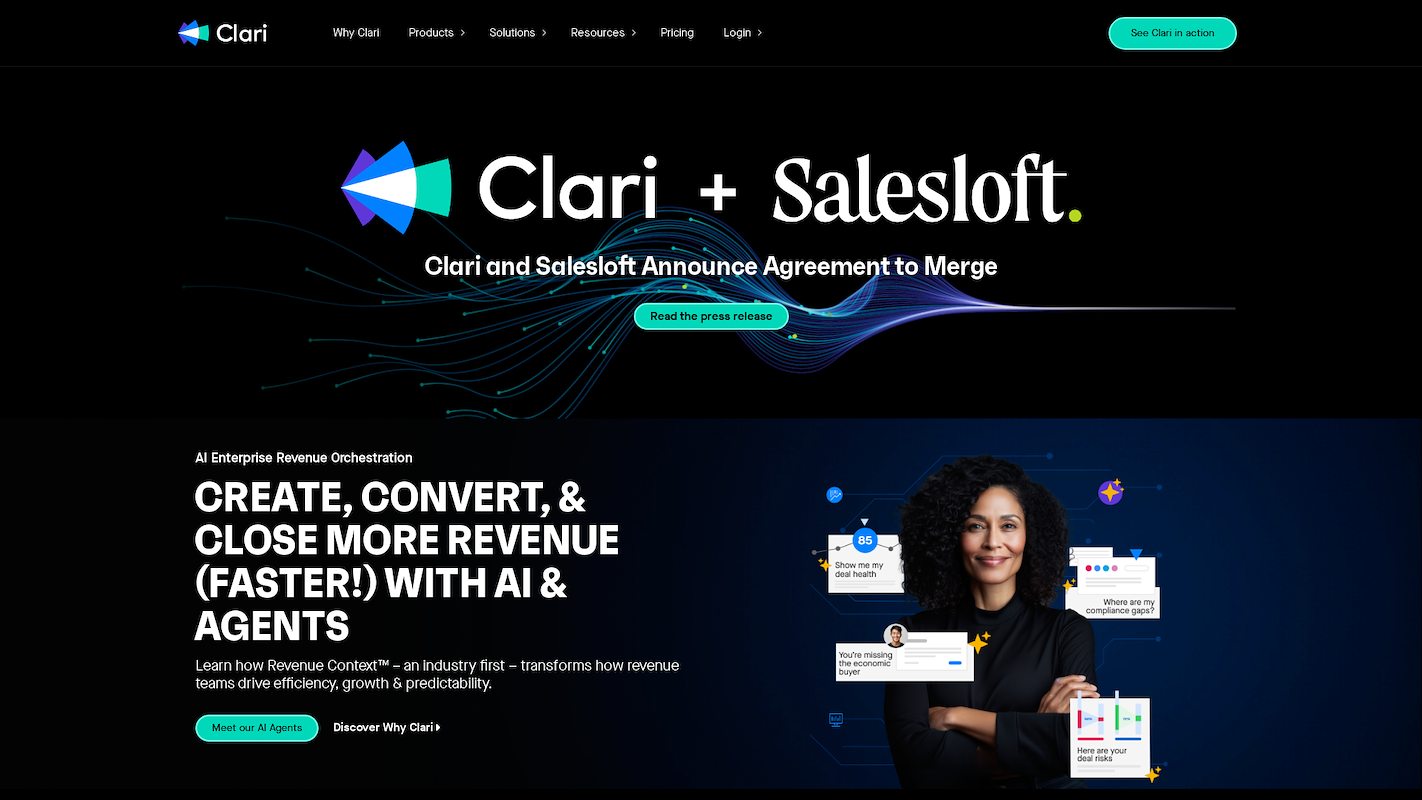
Clari is a revenue orchestration platform that uses AI to help teams increase efficiency, growth, and predictability. It pulls data from CRM, email, and meetings to provide insight and automation for sales workflows. More than 1,500 companies use the platform to manage their revenue processes.
Its main use cases include pipeline management, sales engagement, and customer retention. The platform also provides tools for forecasts, conversation intelligence, and automatic data capture.
Clari's Main Features
- Uses generative AI agents to accelerate deal inspection, automate forecasting, and increase rep productivity.
- Provides a single workspace to run all revenue workflows from end to end.
- Facilitates buyer collaboration and creates mutual action plans to keep sellers and buyers aligned.
- Creates a unified revenue database (RevDB) that serves as a high-fidelity data store for all revenue signals.
How Clari Compares to People.ai
Average Review score: 4.6/5 stars based on 5,464 G2 reviews.
- Clari provides live forecasts with predictive analytics. This offers a more dynamic view of the pipeline compared to People.ai, which uses historical activity data for its predictions.
- It offers live pipeline management to help identify risks and opportunities in real time. This is different from People.ai's method, which centers on the volume of activity to measure pipeline health.
- The platform creates a unified revenue database (RevDB) that consolidates all revenue signals. This provides a single source of truth, whereas People.ai primarily captures and logs activity data into existing systems.
- This tool includes features for buyer collaboration, such as mutual action plans. This helps align sellers and buyers directly, an area not specifically addressed by People.ai's activity-focused platform.
Where Clari May Fall Short
Clari's automatic activity capture can be less complete than what People.ai provides. This may cause some sales interactions to go unlogged in the CRM, which is different from People.ai's focus on total activity capture.
The tool offers high-level pipeline insights but sometimes lacks granular detail on individual rep activities. Teams that depend on the detailed activity metrics from People.ai might find Clari's reports less sufficient for performance management.
Some users report that its customization options are more limited compared to People.ai. For example, it can be more restrictive when you need to set specific rules for data capture or create unique report formats.
Budget and Pricing Considerations
Both Clari and People.ai are in the highest perceived cost bracket. Clari, however, shows a faster implementation at two months (vs. three for People.ai) and a quicker return on investment at 12 months (vs. 13). For exact pricing, we recommend visiting Clari's official website.
3) Outreach
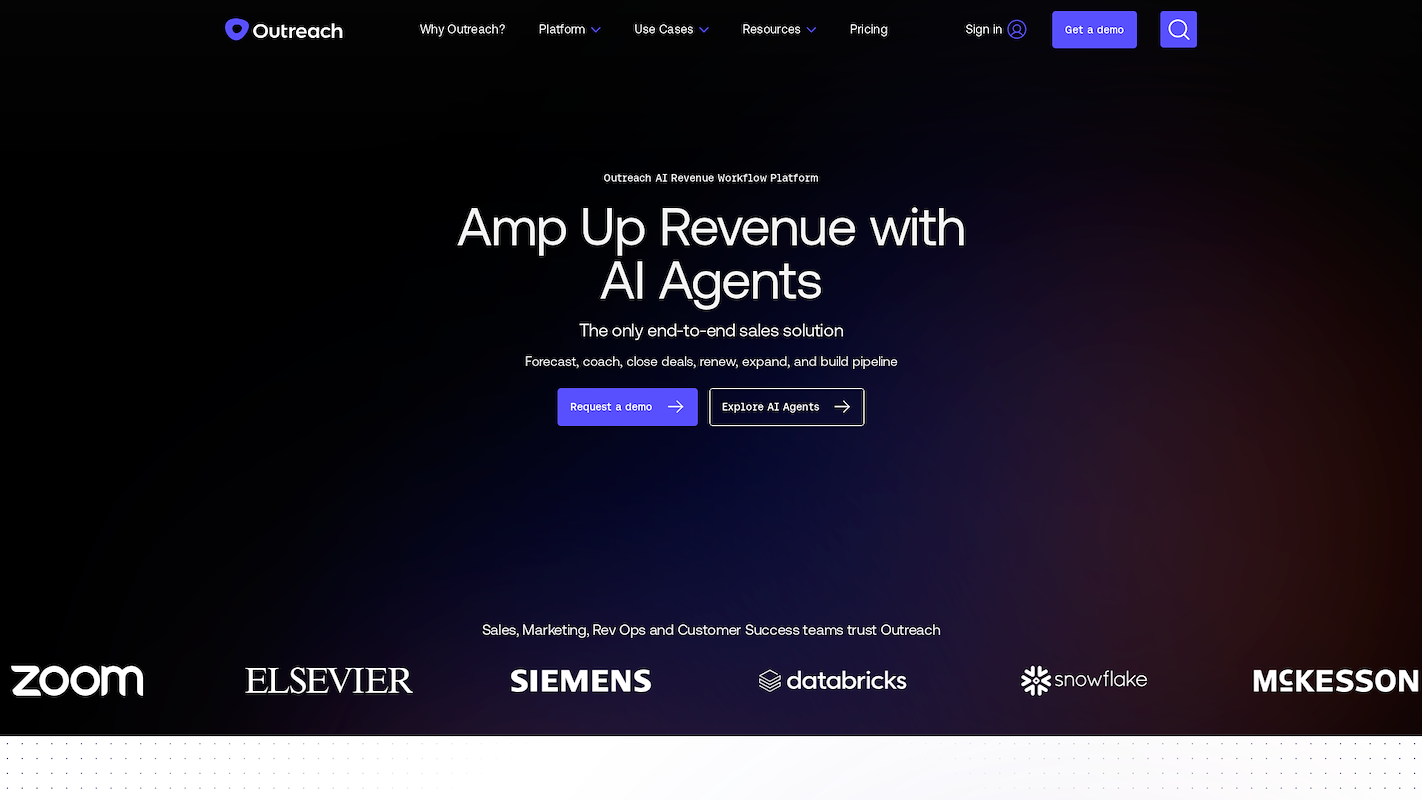
Outreach is a revenue workflow platform that uses AI for sales execution. It combines generative AI agents and data-driven workflows to help teams forecast, coach, close deals, and build pipeline. The platform focuses on security and governance for customer data.
Its functions support deal management with AI insights, revenue forecasts, and coaching at scale. It also assists with customer retention and expansion through dedicated workflows.
Outreach's Main Features
- Provides AI agents for each stage of the revenue cycle, including prospecting, deal management, and customer retention.
- Offers AI-driven rep coaching through its tool, Kaia, which provides meeting summaries, analytics, and Q&A functions.
- Includes buyer-sentiment analysis to detect topics and sentiment across meetings, calls, and emails.
- Delivers real-time content guidance during live meetings with prompts and enablement content cards.
How Outreach Compares to People.ai
Average Review score: 4.3/5 stars based on 3,479 G2 reviews.
- Outreach provides real-time content suggestions during live sales calls. This is different from People.ai, which focuses on analyzing activity data after interactions are complete.
- It offers buyer-sentiment analysis to detect the tone and topics in meetings and emails. This gives a qualitative view of deal health, unlike People.ai's quantitative activity tracking.
- The platform includes a dedicated AI coaching tool, Kaia, for meeting summaries and rep guidance. People.ai provides data that supports coaching but does not have a similar built-in feature.
- This tool unifies sales engagement, revenue intelligence, and operations in a single platform. People.ai centers more specifically on capturing activity data to feed into other systems like a CRM.
Where Outreach May Fall Short
- Outreach focuses on its engagement workflows. This may lead to less complete activity capture than People.ai, which automatically logs all sales interactions to create a full data set in the CRM.
- The tool's data sync can sometimes be an issue for users. Some report that integrations with certain CRMs are not as seamless as with People.ai, which is built to be a primary data enrichment layer.
- It provides analytics centered on sales engagement performance. This is different from People.ai, which offers broader insights on overall account engagement based on the total volume of activity captured.
Budget and Pricing Considerations
Both Outreach and People.ai are in the highest perceived cost bracket, according to G2 user reviews. Outreach offers a faster implementation at one month (vs. three for People.ai) and a quicker ROI at 11 months (vs. 13). For detailed pricing, visit Outreach's official website.
4) Salesloft
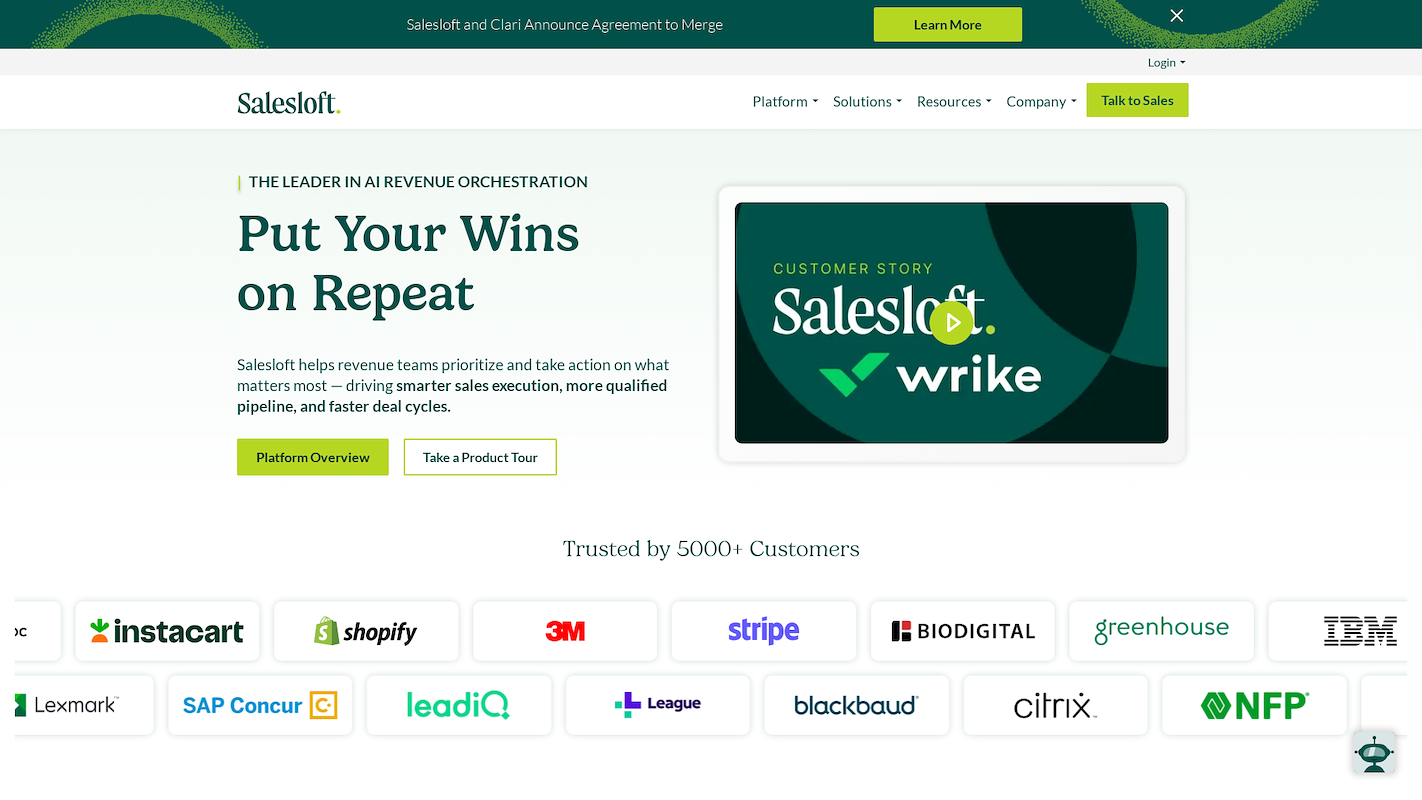
Salesloft is a revenue workflow platform that helps sales teams manage the entire sales cycle. It provides tools for sales engagement, conversation intelligence, and revenue operations. Its main use cases include deal management, sales process execution, and revenue forecast.
The platform guides sellers through their workflows and helps managers oversee the process. More than 4,500 companies use Salesloft.
Salesloft's Main Features
- Its AI prioritization engine, Rhythm, recommends the right actions for sellers at the right moments.
- The platform offers automated, structured workflows called Cadence for building and nurturing the pipeline.
- It includes Drift AI chat agents that engage website visitors with real-time, personalized conversations.
- Conductor AI provides outcome-first agents that automate, optimize, and scale sales processes.
How Salesloft Compares to People.ai
Average Review score: 4.5/5 stars based on 4,145 G2 reviews.
- Salesloft's AI engine, Rhythm, recommends the next best actions for sellers. This is different from People.ai, which provides insights based on past activity data rather than real-time guidance.
- The platform offers structured workflows called Cadence for building and nurturing the pipeline. People.ai captures activity but does not provide a similar guided sequence for sales outreach.
- It includes Drift AI chat agents that engage website visitors with personalized conversations. This is a lead generation function not present in People.ai's core activity capture offering.
- Conductor AI automates and optimizes entire sales processes. This approach is different from People.ai's automation, which centers on capturing and logging data into the CRM.
Where Salesloft May Fall Short
- Salesloft focuses on its structured Cadence workflows. This means it sometimes misses activities that happen outside these sequences, unlike People.ai, which captures a wider range of sales interactions automatically.
- The tool's analytics center on sales engagement performance. This is different from People.ai, which provides broader account engagement metrics based on the total volume of captured activity data.
- Some users report that its data sync with certain CRMs can be less smooth. People.ai is built specifically as a data enrichment layer, which can make its integration feel more seamless for pure data capture tasks.
Budget and Pricing Considerations
According to G2 user reviews, both Salesloft and People.ai are in the highest perceived cost bracket. Salesloft, however, offers a faster implementation at one month (vs. three for People.ai) and a quicker return on investment at 11 months (vs. 13). For detailed pricing, visit Salesloft's official website.
5) Groove

Groove is a sales engagement platform built for Salesforce users. It automates sales workflows and captures customer interactions to provide a complete view of account activity.
Its main use cases include pipeline management, forecasting, and account-based engagement. The platform helps revenue teams execute their sales process with data from their CRM.
Groove's Main Features
- Operates as a native Salesforce application to manage sales engagement within the CRM environment.
- Automates multi-step sales campaigns and workflows to guide seller actions.
- Provides tools to support account-based sales strategies and targeted outreach.
- Uses live CRM data to help teams execute their sales process and manage the pipeline.
How Groove Compares to People.ai
Average Review score: 4.6/5 stars based on 193 G2 reviews.
- Groove operates as a native Salesforce application, which provides a more integrated experience within the CRM. This is different from People.ai, which integrates with CRMs primarily as an external data layer to push activity information.
- The platform automates multi-step sales campaigns through structured workflows. People.ai, in contrast, focuses on capturing activity data from campaigns but does not provide the tools to build and execute them.
- It includes specific tools to support account-based sales strategies and targeted outreach. This offers a more direct way to execute ABM plays than People.ai, which provides account-level data but lacks dedicated ABM workflow features.
- This tool uses live CRM data to help teams execute their sales process. This provides real-time context for actions, while People.ai uses captured activity data to generate historical insights and forecasts.
Where Groove May Fall Short
- Groove's activity capture can sometimes be less comprehensive. Compared to People.ai, which aims to log every interaction automatically, some users report that Groove may miss certain activities if they do not fit its predefined rules.
- The tool's reporting features are sometimes seen as less flexible. People.ai provides broad analytics on account engagement from all captured data, while some users find Groove's reporting and filtering options more limited for deep analysis.
- Its focus is primarily on sales engagement workflows within Salesforce. This is different from People.ai, which acts as a broader data platform to enrich any connected CRM with a complete record of all sales activities, regardless of the workflow.
Budget and Pricing Considerations
People.ai is in the highest perceived cost bracket based on G2 user reviews, though it does not disclose public pricing. Groove also does not provide public pricing, so for detailed information, we recommend visiting Groove's official website.
Explore Digital Workers With 11x
For teams interested in digital sales workers, 11x provides AI agents for prospecting, outreach, and lead qualification. This approach automates specific sales development functions. Consider visiting their website to see if the platform fits your current strategy.
With 11x, we run your sales playbook. Alice finds accounts, enriches data, and handles outreach. Julian takes calls, qualifies leads, and books meetings. Our platform combines intent data and email warmup, replacing multiple tools in your GTM stack.
Book a demo to see 11x in action.
6) Apollo.io
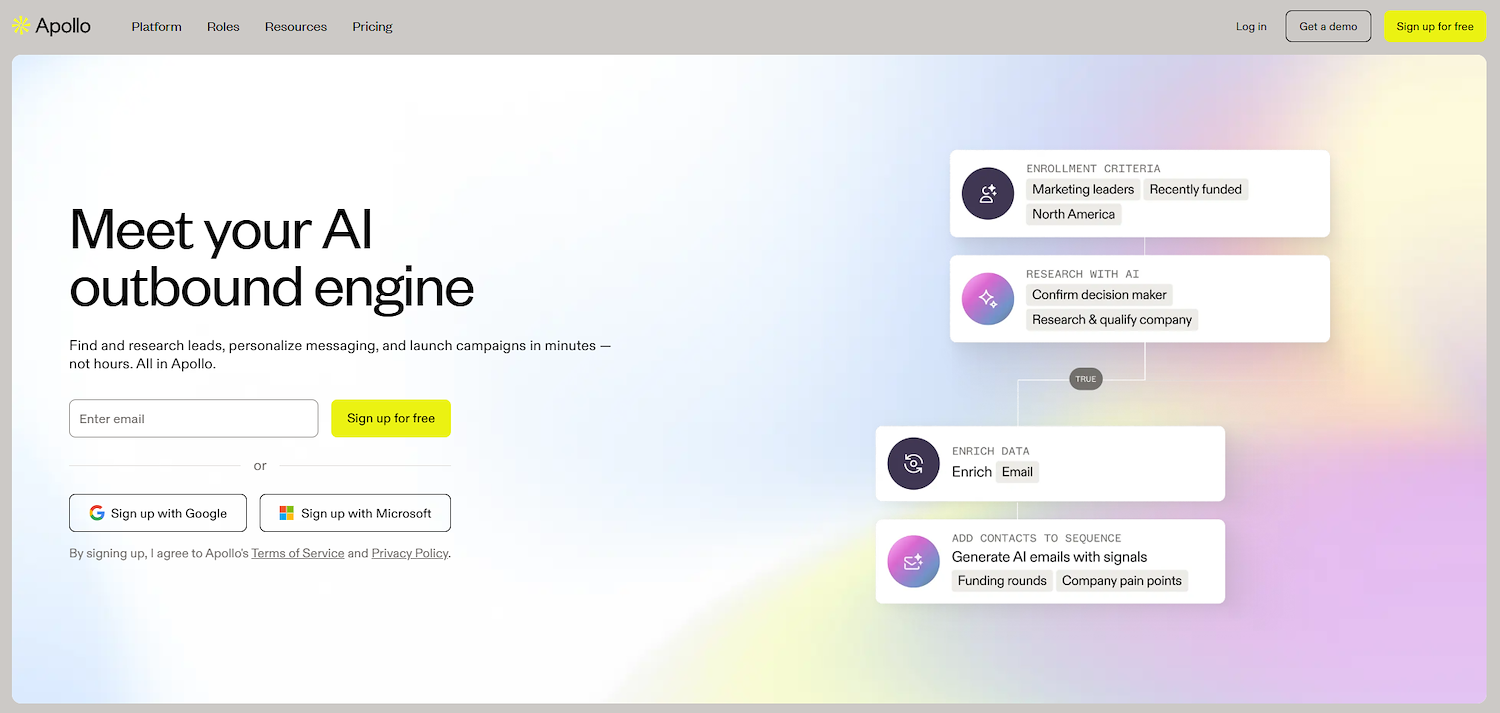
Apollo.io is a sales intelligence and engagement platform. It provides access to a database of contacts and companies to find prospects. The platform combines this data with tools for outreach and workflow automation.
Its main use cases are lead generation and sales engagement. Teams use it to find potential buyers, execute outreach campaigns, and manage their sales pipeline from a single interface.
Apollo.io's Main Features
- Provides access to a B2B database with contact and company data for prospecting.
- Automates multi-channel outreach with sequences for email, phone, and LinkedIn tasks.
- Includes an AI-powered writing assistant to help generate and personalize sales emails.
- Sends job change alerts to notify users when contacts in their network switch companies.
How Apollo.io Compares to People.ai
Average Review score: 4.7/5 stars based on 8,904 G2 reviews.
- Apollo.io provides a B2B database with over 210 million contacts for prospecting. This is a core lead generation function, whereas People.ai focuses on capturing activity from existing contacts.
- It combines its contact data with sales engagement tools in a single platform. This is different from People.ai, which primarily acts as a data layer that feeds activity information into other systems.
- The platform includes an AI writing assistant to help generate and personalize sales emails. People.ai, in comparison, analyzes email content after it is sent but does not assist in its creation.
- This tool sends job change alerts to notify users when contacts switch companies. This provides a specific trigger for outreach that differs from the activity-based insights generated by People.ai.
Where Apollo.io May Fall Short
- Apollo.io focuses on its engagement workflows, so its activity capture can be less complete. Compared to People.ai, which records all sales interactions automatically, some activities outside of Apollo's sequences might not get recorded.
- Its analytics center on prospect and engagement metrics, not overall revenue intelligence. This is different from People.ai, which uses its complete activity data to analyze account health and generate sales forecasts.
- The tool relies on a large external database for contacts, and some users report occasional data inaccuracies. This contrasts with People.ai, which records a company's own internal activity data, where such issues are less common.
Budget and Pricing Considerations
Apollo.io offers transparent pricing with a free plan and paid tiers starting at $49 per user per month, making it accessible for teams with fixed budgets. People.ai is in the highest perceived cost bracket and does not disclose public pricing. For detailed costs, visit Apollo.io's official website.
7) Seismic
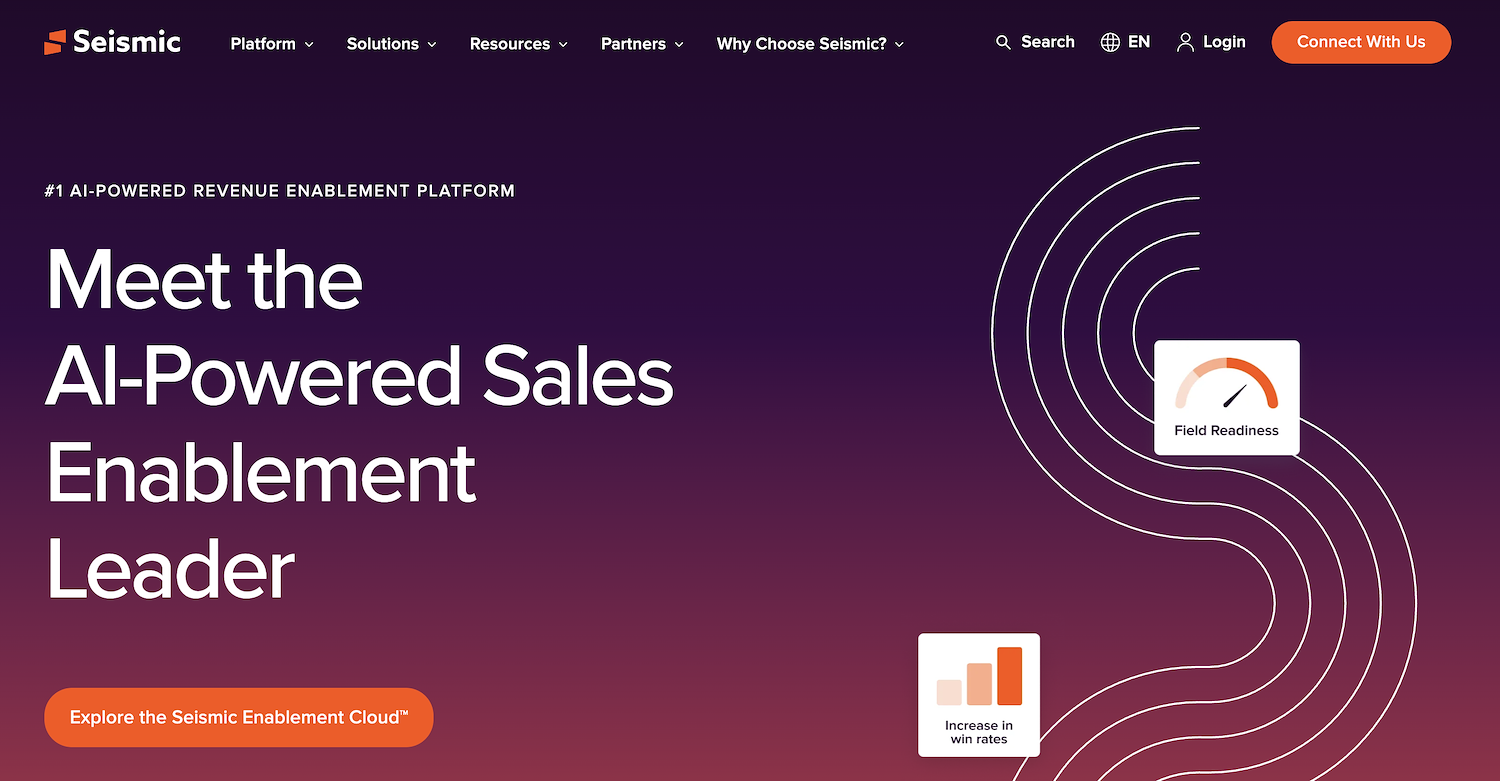
Seismic is an enablement platform that helps companies equip their customer-facing teams. It provides tools for content management, team training, and go-to-market strategy. The platform supports the entire go-to-market organization with a unified system.
Its main use cases include sales content delivery, rep coaching, and buyer communication. The system also delivers insights to measure the performance of enablement efforts and their effect on revenue.
Seismic's Main Features
- Manages sales and marketing assets in a governed repository with version control and usage analytics.
- Provides in-app training, onboarding, and certification modules to upskill sales reps.
- Creates interactive, buyer-facing portals to manage deal cycles.
- Uses generative AI to automate content personalization and surface real-time insights.
How Seismic Compares to People.ai
Average Review score: 4.7/5 stars based on 1,615 G2 reviews.
- Seismic provides a central repository to manage sales and marketing content with version control. This is different from People.ai, which focuses on capturing activity data instead of managing content assets.
- It offers in-app training and onboarding modules to help develop rep skills. People.ai provides data that can inform coaching but does not have these specific, built-in training features.
- The platform creates interactive, buyer-facing portals to manage deal cycles. This is a direct buyer engagement tool, while People.ai tracks engagement through the analysis of activity data.
- This tool uses generative AI to automate content personalization for sales situations. In contrast, People.ai's AI analyzes past interactions for insights but does not assist in content creation.
Where Seismic May Fall Short
- Seismic focuses on tracking engagement with its content, not on broad activity capture. This is different from People.ai, which automatically logs a wider range of sales activities, such as calls and meetings, providing a more complete activity record.
- The tool's analytics center on content performance and its impact on revenue. This approach does not provide the same kind of activity-based sales forecasting that People.ai generates from its comprehensive data capture.
- It functions primarily as a sales enablement platform for content and training. Some users find its data integration capabilities less direct compared to People.ai, which is built specifically to act as a data layer for a CRM.
Budget and Pricing Considerations
According to G2 user reviews, both Seismic and People.ai are in the highest perceived cost bracket and do not disclose public pricing. People.ai shows a faster implementation time at three months versus Seismic's four, and a quicker return on investment at 13 months compared to 18. For detailed pricing, we recommend visiting Seismic's official website.
8) Highspot
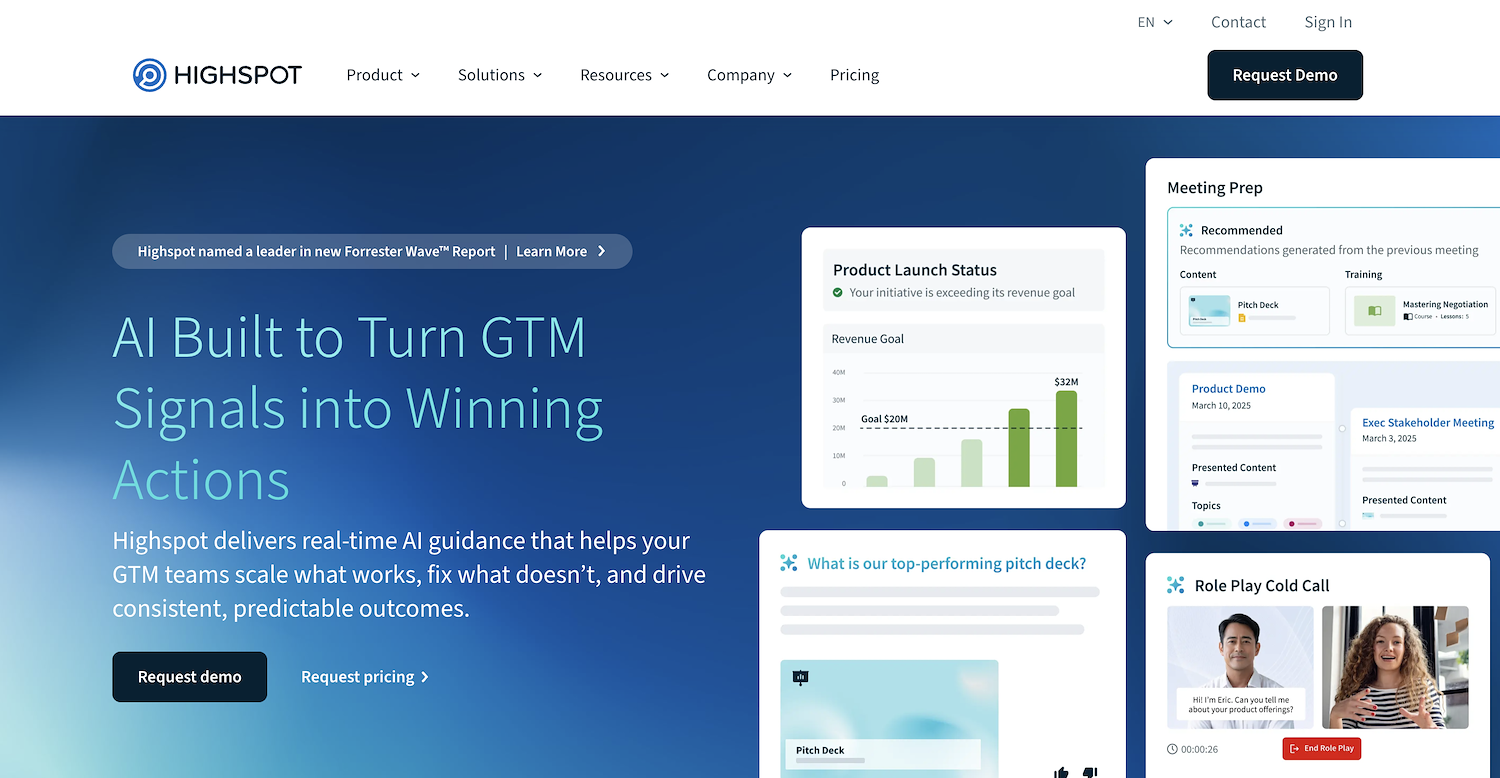
Highspot is a sales enablement platform that unifies content, guidance, and training. It gives sales teams resources for customer conversations. The system is a single source for sales assets and strategic plays.
Its main use cases cover content management, rep skill development, and buyer engagement. The platform also has analytics to connect enablement work with revenue results.
Highspot's Main Features
- Manages sales content with features for creation, import, and templates.
- Provides tools for live, mobile, and screen-shared presentations to support account-based engagement.
- Offers analytics, reporting, and alerts to measure content performance and usage.
How Highspot Compares to People.ai
Average Review score: 4.7/5 stars based on 1,192 G2 reviews.
- Highspot provides a central system for content management, including creation and templates. This is different from People.ai, which captures sales activity but does not manage content assets.
- It offers built-in training and guidance tools to help reps during their workflow. People.ai provides data that can inform coaching but lacks these specific, integrated training features.
- The platform includes tools for direct buyer engagement, such as live presentations and screen sharing. This contrasts with People.ai, which tracks engagement by analyzing activity data after interactions occur.
- Its analytics focus on measuring content performance and usage. People.ai's analytics, in comparison, center on sales activity volume and its effect on the pipeline.
Where Highspot May Fall Short
- Highspot's focus is on content engagement, so its activity capture can be less complete. In comparison, People.ai automatically logs a broad range of sales interactions, which creates a more comprehensive activity record in the CRM.
- Its analytics measure content performance and its impact on revenue. This is different from People.ai, which uses its comprehensive activity data to generate sales forecasts based on historical engagement patterns.
- The platform functions as a sales enablement system for content and training. Some users note its data integration is less direct compared to People.ai, which is built specifically to act as a data enrichment layer for a CRM.
Budget and Pricing Considerations
According to G2 user reviews, both Highspot and People.ai are in the highest perceived cost bracket. Highspot has a faster implementation time at two months versus People.ai's three, but People.ai shows a quicker return on investment at 13 months compared to 15. For detailed pricing, we recommend visiting Highspot's official website.
9) Revenue.io
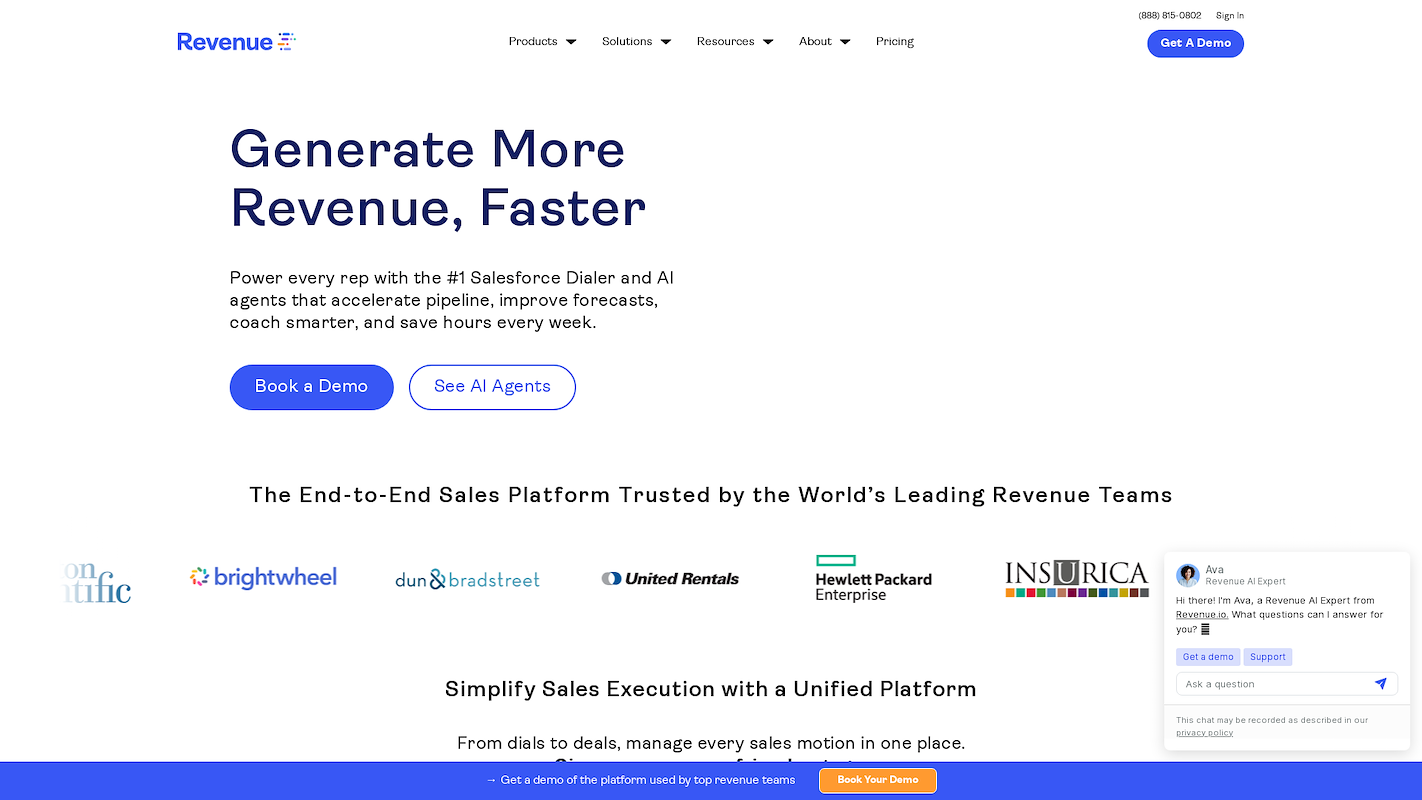
Revenue.io is a real-time guidance platform for sales teams. It uses AI to analyze conversations and direct reps during calls. Its main use cases include conversation intelligence, sales rep support, and forecast accuracy.
The system gives managers insight into team performance and pipeline risks. It connects with a CRM to offer a complete view of revenue operations.
Revenue.io's Main Features
- Manages phone numbers for sales teams and provides local phone numbers for calling.
- Records calls and captures related data for analysis and performance tracking.
- Offers advanced reporting and analytics based on call data.
How Revenue.io Compares to People.ai
Average Review score: 4.7/5 stars based on 549 G2 reviews.
- Revenue.io provides real-time guidance to reps during live calls. This is different from People.ai, which analyzes activity data after interactions are complete.
- The platform offers call management features, such as local phone numbers for outreach. People.ai logs call activity but does not provide these specific calling tools.
- It uses AI to analyze conversations as they happen and suggest actions. This contrasts with People.ai's approach, which focuses on the volume of past activities for its insights.
- This tool provides advanced reporting based on call data. People.ai's analytics, in comparison, center on overall account engagement from all captured activities.
Where Revenue.io May Fall Short
- Revenue.io focuses its data capture on call activity. This is different from People.ai, which automatically logs a wider range of interactions, including emails and meetings, to create a more complete activity record.
- The tool's analytics center on call performance and conversation intelligence. This approach may not provide the broad, account-level engagement insights that People.ai generates from its capture of all sales activities.
- Its forecasting capabilities often rely on conversation analysis from calls. Some teams might find this less comprehensive than People.ai's method, which uses the total volume of historical activity to predict outcomes.
Budget and Pricing Considerations
According to G2 user reviews, both Revenue.io and People.ai are in the highest perceived cost bracket. Revenue.io, however, offers a faster implementation at one month (vs. three for People.ai) and a quicker return on investment at nine months (vs. 13). For detailed pricing, we recommend visiting Revenue.io's official website.
10) ZoomInfo
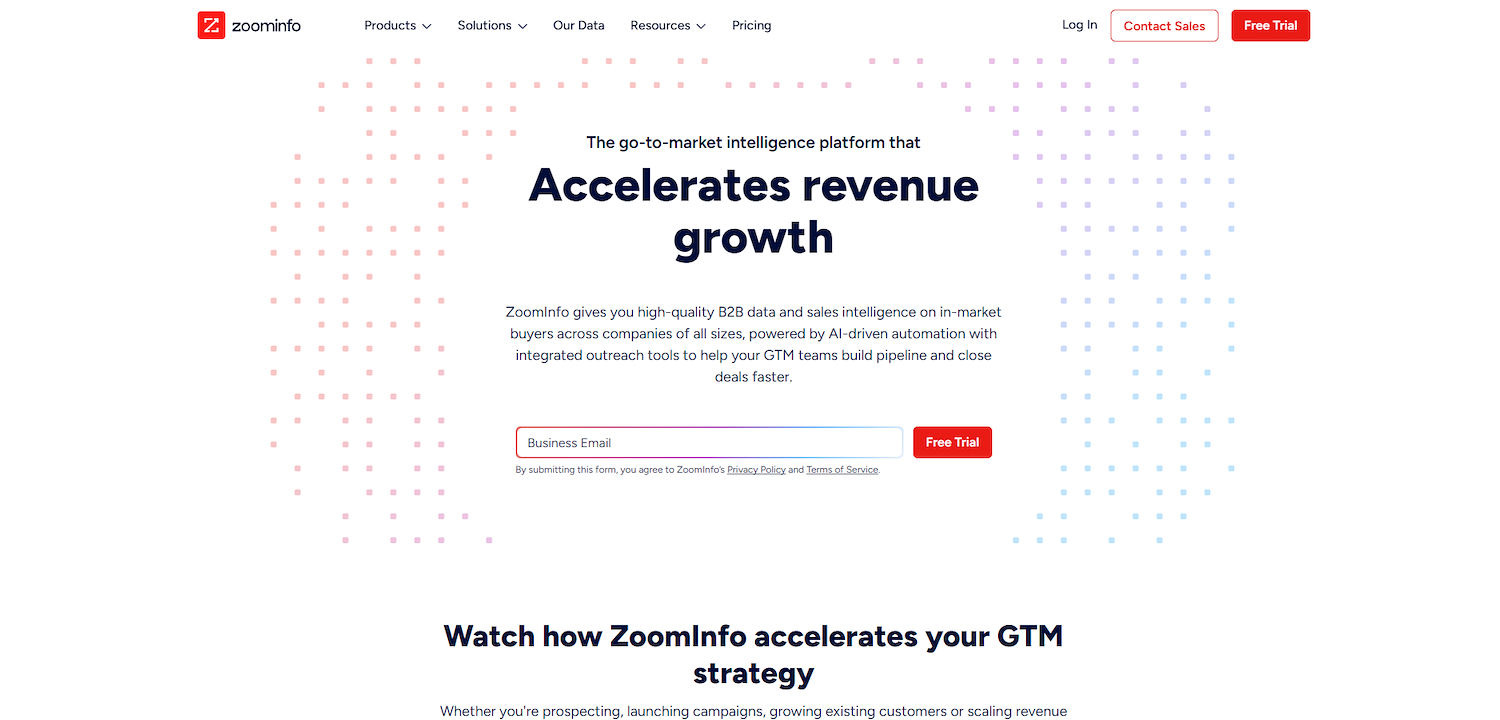
ZoomInfo is a go-to-market intelligence platform. It provides a database of company and contact information for sales and marketing teams to find potential buyers.
Its main use cases include prospecting, lead generation, and data enrichment. Teams use the platform to support revenue operations with accurate data.
ZoomInfo's Main Features
- Provides a database of company and contact information with purchasing intent data.
- Uses a generative AI tool, Copilot, to give recommendations on who to contact and what to say.
- Offers additional tools for conversation intelligence, sales engagement, and data orchestration.
- Includes features for data cleaning and enrichment to maintain data accuracy.
How ZoomInfo Compares to People.ai
Average Review score: 4.5/5 stars based on 8,738 G2 reviews.
- ZoomInfo provides a large B2B database to find new prospects. This is different from People.ai, which captures and analyzes activity from a company's existing contacts.
- Its AI tool, Copilot, gives recommendations on who to contact and what to say. This provides proactive guidance, while People.ai's AI analyzes past activities to generate insights.
- The platform combines its data with built-in tools for sales engagement and conversation intelligence. This creates a unified system, unlike People.ai, which acts as a data layer for other tools.
- This tool offers data cleaning and enrichment features to maintain contact data accuracy. People.ai, in comparison, focuses on the completeness of sales activity data capture.
Where ZoomInfo May Fall Short
- ZoomInfo's activity capture sometimes misses interactions that happen outside its platform. Compared to People.ai, which automatically logs a wider range of sales activities, this can result in a less complete activity record in the CRM.
- The tool's analytics focus on prospecting and engagement metrics. This is different from People.ai, which uses its comprehensive activity data to analyze overall account health and generate sales forecasts.
- It relies on a large external database for contacts, and some users report occasional data inaccuracies. This contrasts with People.ai, which records a company's own internal activity data, where such issues are less common.
Budget and Pricing Considerations
According to G2 user reviews, both ZoomInfo and People.ai are in the highest perceived cost bracket. ZoomInfo offers a faster implementation at one month (vs. three for People.ai), while People.ai shows a slightly quicker return on investment at 13 months (vs. 14). For detailed pricing, visit ZoomInfo's official website.
Which One Should You Go With?
Your choice of a People.ai alternative depends on many variables, from team needs to budget. This guide analyzed several top platforms to provide a clear path for your decision.
If your goal is to automate sales development, consider 11x. Its digital workers handle prospecting, outreach, and lead qualification, allowing your team to focus on closing deals. This approach can replace multiple tools in your GTM stack.




